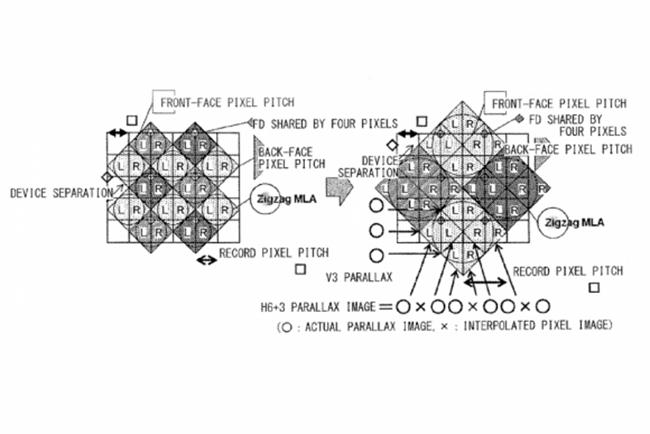
We don’t normally talk about rumors unless there is substantial evidence of actual products, which is why two reports – if real – could make a huge impact in the camera industry, and have us excited.
The first is a recently discovered Sony sensor patent that suggests the company could produce its own light-field camera, much like the new Lytro Illum.
U.S. Patent Application 20140071244, first filed in 2012, describes a light-field sensor that could offer enhanced image resolution due to its unique, dual-layered pixel layout. The sensor also has microlenses capable of spanning several pixels.
Sony’s light-field sensor seems to operate similarly to those used in phase detection autofocusing; the two pixel layers “look” in different directions, but still get the same amount of light from the sensor’s microlens; images captured by this sensor will even have some 3D information. It’s not yet known how Sony will utilize this new technology, or an indication they’ll be releasing a light-field camera anytime soon.
Speaking of possible camera releases, consumers are still eagerly awaiting the next Canon 5D DSLR, the Mark IV. According to Canon Watch, this future Mark III successor could have 4K video capability, a feature that is becoming common among several new high-end digital cameras, such as those from Sony and Panasonic.

Though it’s merely speculation at this point, this 4K feature seems pretty feasible; the 5D Mark II jumped up to HD recording, and it only makes sense for Canon to take the next 5D to the next level too. Adding 4K capability could kick the 5D’s resolution from 1920 x 1080 to 4096 x 2160, making it an even bigger contender for pro-level videographers to consider. With Canon focusing heavily on the cinematography industry (its 5D Mark II, after all, was what ignited the use of DSLRs in filmmaking) and retaining its grip on the DSLR market, there’s a good reason why we think Canon might actually make this happen.
This move could also deter Canon users from jumping to rival camera companies already offering 4K video, including Sony, Panasonic, and others. Canon might make an official announcement about the 5D Mark IV at the start of 2015, or even as early as the Photokina show this year, so stay tuned for more updates.
(Via Imaging Resource; via Canon Watch)


